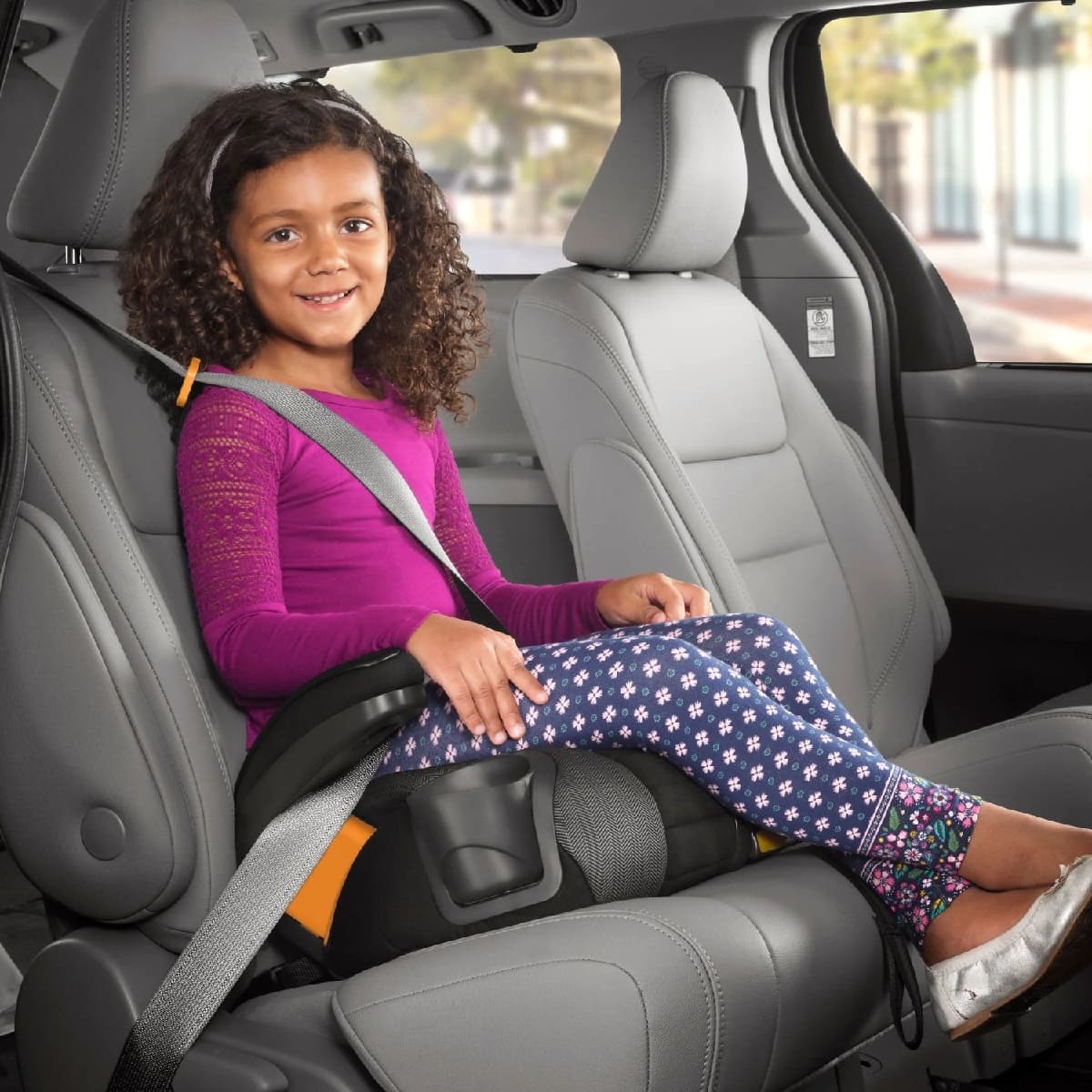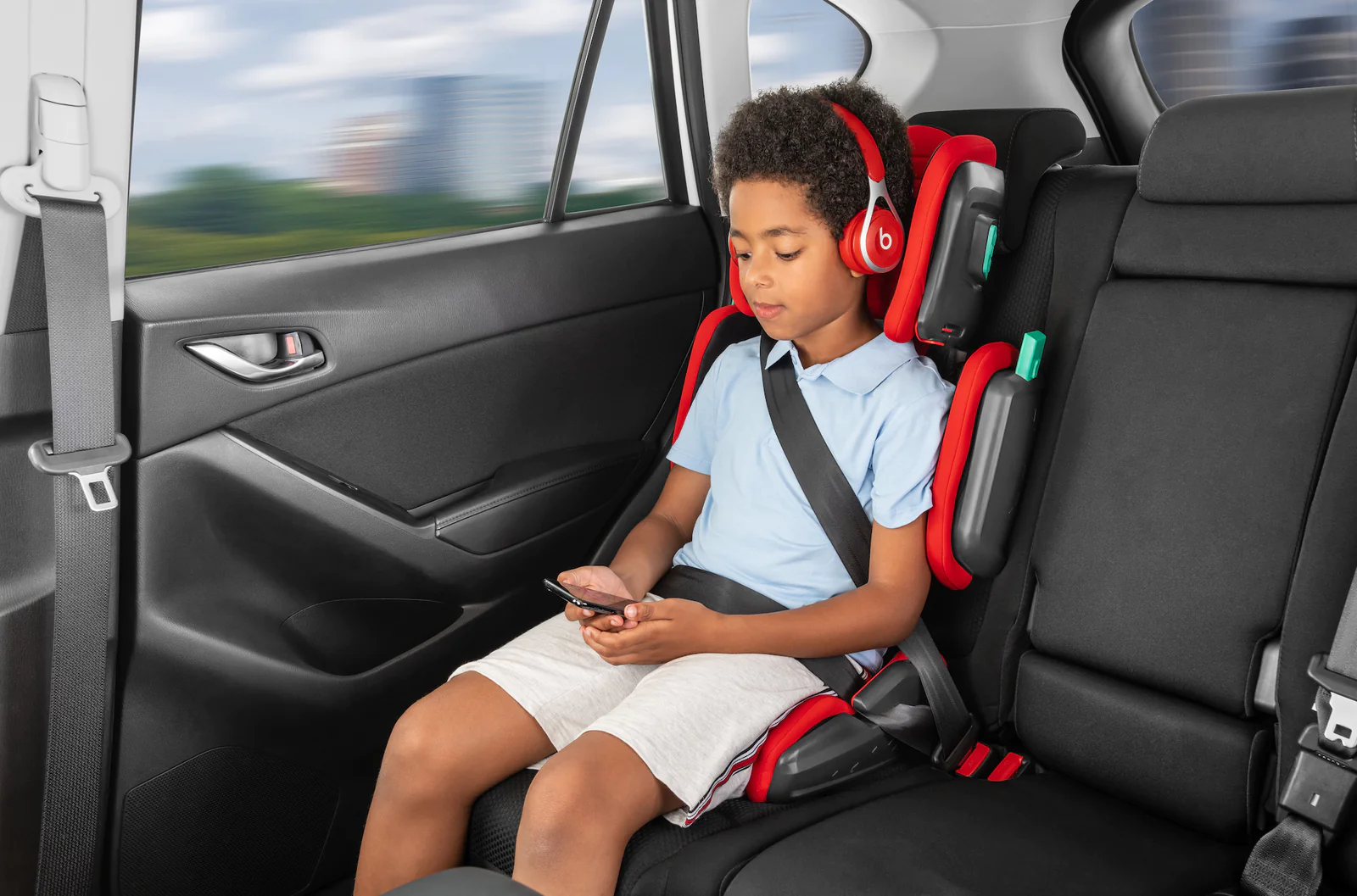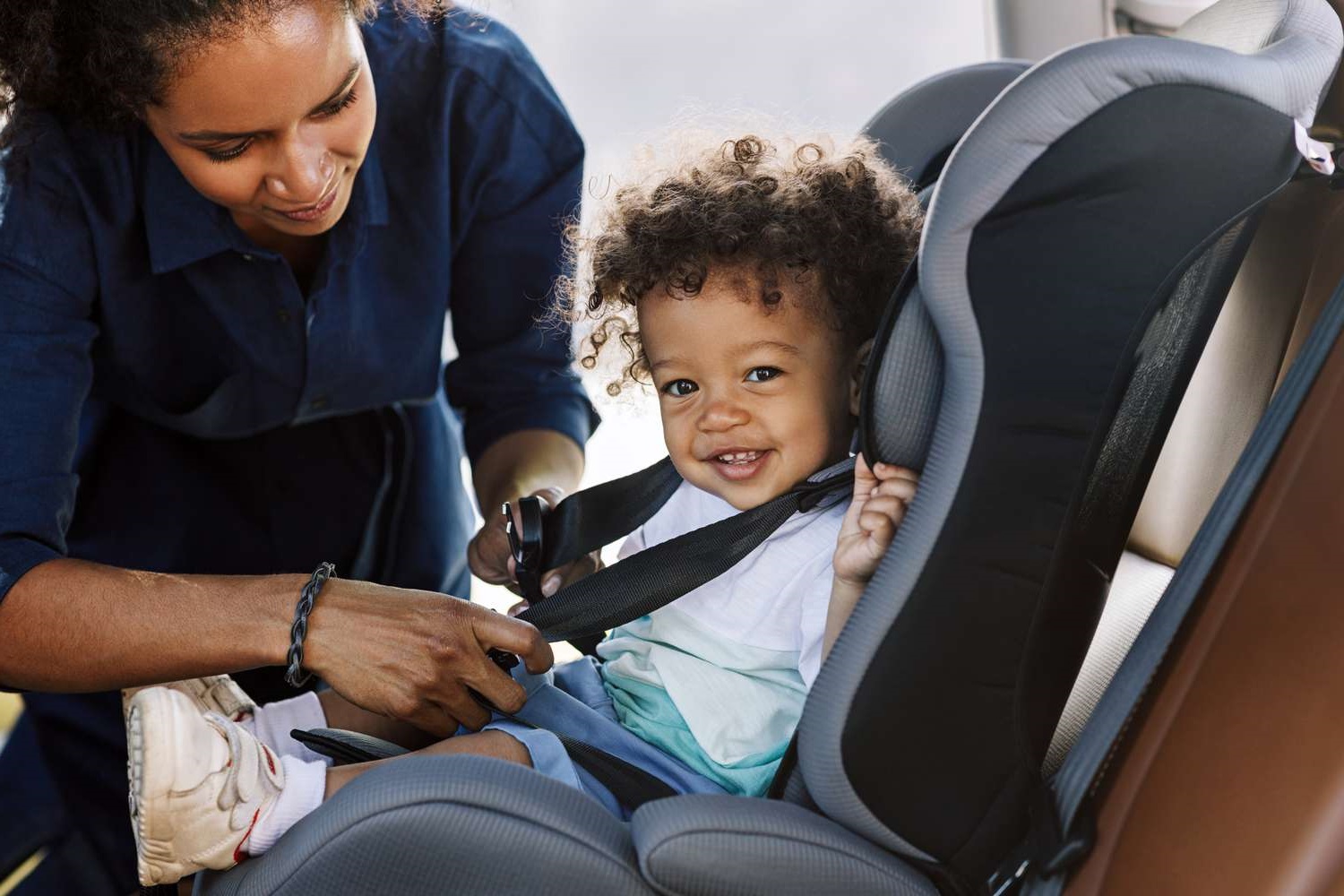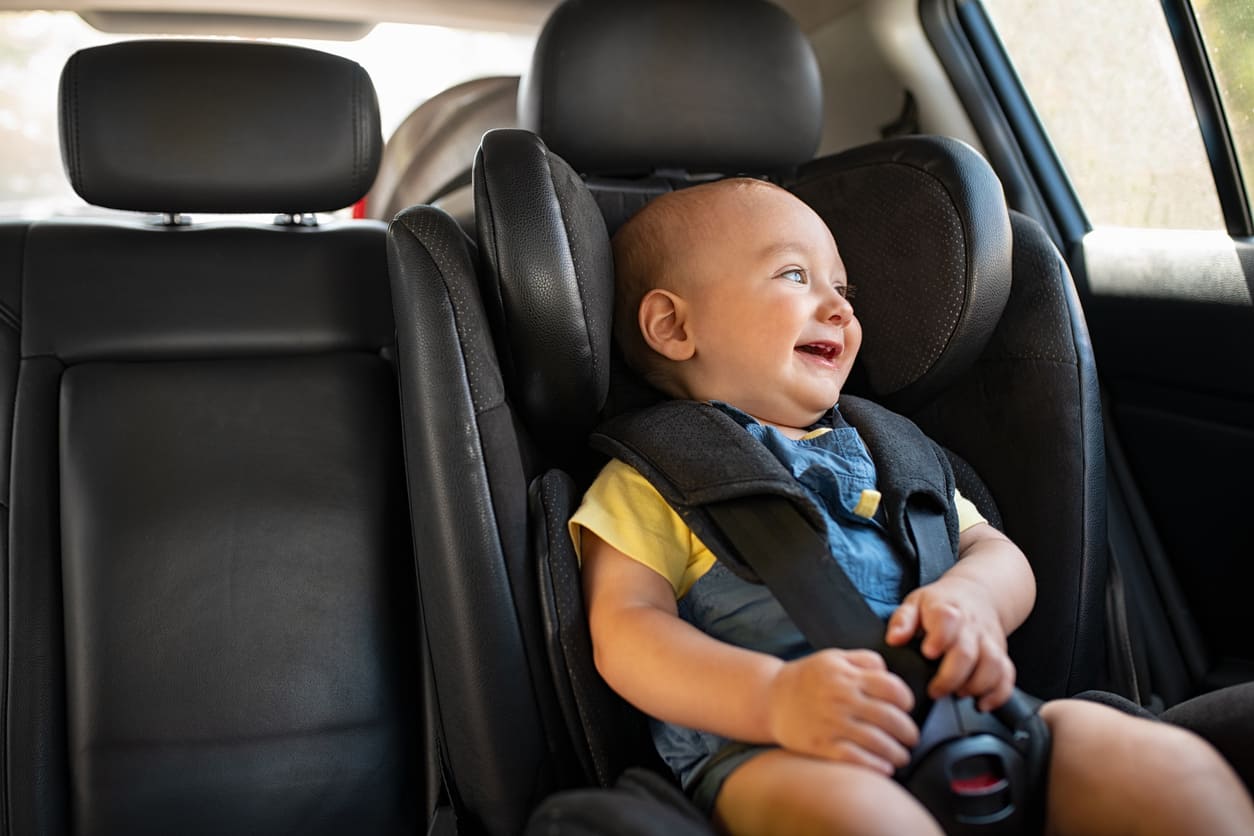Home>Maintenance & Safety>Child & Elderly Safety at Home>When Can A Child Stop Using A Booster Seat In Texas


Child & Elderly Safety at Home
When Can A Child Stop Using A Booster Seat In Texas
Modified: March 2, 2024
In Texas, child safety laws require children to use a booster seat until they reach a certain height and age. Learn about child and elderly safety at home in Texas.
(Many of the links in this article redirect to a specific reviewed product. Your purchase of these products through affiliate links helps to generate commission for Storables.com, at no extra cost. Learn more)
Introduction
Ensuring the safety of children while traveling in vehicles is a top priority for parents and caregivers. In Texas, as in many other states, there are specific laws and guidelines in place to protect young passengers. One crucial aspect of child passenger safety is the use of booster seats, which are designed to provide additional protection for children who have outgrown their forward-facing car seats but are not yet ready to use the vehicle's seat belt alone.
Understanding when a child can stop using a booster seat in Texas is essential for parents and caregivers to ensure the safety of young passengers. This article will delve into the Texas law on booster seat requirements, factors to consider when determining if a child is ready to transition out of a booster seat, age and height guidelines, as well as exceptions to the law.
By gaining a comprehensive understanding of the regulations and best practices surrounding booster seat usage, parents and caregivers can make informed decisions to safeguard their children during car travel. Let's explore the specifics of booster seat requirements in Texas and the considerations that play a crucial role in determining when a child can transition out of a booster seat.
Key Takeaways:
- In Texas, kids under 8 or 4’9″ tall must use a booster seat. But, it’s not just about age and height—behavior, seat belt fit, and professional advice also matter for a safe transition.
- Exceptions to the law, like medical reasons or vehicle limitations, can affect booster seat rules. Parents and caregivers should consider these factors to keep kids safe on the road.
Texas Law on Booster Seat Requirements
In Texas, the law mandates the use of a booster seat for children under the age of 8 or under 4 feet 9 inches tall. This requirement is based on the understanding that children of this age and size are not adequately protected by adult seat belts alone. Booster seats are specifically designed to elevate children to a height at which the vehicle's seat belt fits them properly, ensuring that the belt crosses their body at the strongest parts of their anatomy.
The Texas Transportation Code, specifically Section 545.412, outlines the legal requirements for child passenger safety. It stipulates that a child under 8 years of age must be secured in a child passenger safety seat system, which includes a booster seat, unless the child is taller than 4 feet 9 inches. This law is instrumental in safeguarding young passengers and reducing the risk of injury in the event of a collision or sudden stop.
Furthermore, the law emphasizes the importance of using booster seats that meet federal safety standards. These standards ensure that booster seats provide the necessary protection and support for young passengers. It is crucial for parents and caregivers to select booster seats that comply with these safety standards to effectively protect their children while traveling in vehicles.
By adhering to the Texas law on booster seat requirements, parents and caregivers play a pivotal role in promoting child safety and well-being. The law serves as a proactive measure to mitigate the potential risks associated with improper restraint systems for young passengers. It underscores the significance of using booster seats as a means of providing optimal protection for children during car travel.
Understanding and complying with the legal requirements for booster seat usage in Texas is essential for ensuring the safety of young passengers. By familiarizing themselves with the specifics of the law, parents and caregivers can take proactive steps to protect their children and uphold the standards of child passenger safety.
In the subsequent sections, we will delve into the factors to consider when determining if a child is ready to transition out of a booster seat, as well as the age and height guidelines that play a crucial role in this decision-making process. Additionally, we will explore exceptions to the law, providing a comprehensive overview of booster seat requirements in Texas.
Factors to Consider
When determining if a child is ready to transition out of a booster seat, several factors should be carefully considered to ensure the child's safety and proper vehicle restraint. While age and height guidelines provide a general framework, individual readiness can vary based on specific developmental and physical factors. Here are key considerations for determining when a child can stop using a booster seat in Texas:
Physical Development:
The physical development of the child plays a significant role in determining readiness to transition out of a booster seat. While age is a primary factor, it's essential to assess the child's physical attributes, including bone structure and overall body proportions. Children mature at different rates, and some may not achieve the necessary skeletal development to safely use a vehicle's seat belt without a booster seat until they are older than 8 years.
Seat Belt Fit:
The proper fit of the vehicle's seat belt is crucial in ensuring the child's safety. When considering transitioning out of a booster seat, it's important to assess whether the seat belt fits the child correctly. The lap belt should lie snugly across the upper thighs, not the stomach, and the shoulder belt should cross the chest and shoulder, not the neck or face. If the seat belt does not fit properly, the child should continue using a booster seat until they meet the necessary criteria for a secure fit.
Behavioral Maturity:
In addition to physical readiness, behavioral maturity is an important consideration. A child should demonstrate the ability to sit properly in the vehicle seat for the entire duration of the trip, maintaining proper posture and refraining from slouching or leaning out of position. Behavioral maturity is essential for ensuring that the child can utilize the vehicle's seat belt as intended, without compromising their safety.
Parental Supervision:
Parental supervision and oversight are crucial when assessing a child's readiness to transition out of a booster seat. Parents and caregivers should observe the child's behavior during car rides, ensuring that they consistently adhere to safe seating practices. Additionally, parents can monitor the child's comfort and confidence when using the vehicle's seat belt without a booster seat, providing guidance and reinforcement as needed.
Professional Evaluation:
Seeking professional evaluation from a certified child passenger safety technician can provide valuable insights into the child's readiness to transition out of a booster seat. These experts can assess the child's physical attributes, conduct seat belt fit tests, and offer personalized recommendations based on the child's specific needs. Professional evaluation adds an extra layer of assurance, helping parents make informed decisions regarding booster seat transition.
By carefully considering these factors, parents and caregivers can make well-informed decisions regarding the transition out of a booster seat for their child. It's important to prioritize the child's safety and comfort, ensuring that they are adequately protected while traveling in a vehicle. Understanding the nuances of booster seat readiness empowers parents to promote safe and secure transportation for their young passengers.
Age and Height Guidelines
Age and height guidelines serve as fundamental benchmarks for determining when a child can transition out of a booster seat in Texas. While the state law specifies that children under the age of 8 or under 4 feet 9 inches tall must use a booster seat, it's essential to delve deeper into the significance of these guidelines in promoting child passenger safety.
Age Considerations
The age of a child is a primary factor in booster seat readiness. Children develop physically and cognitively at varying rates, and age serves as a general indicator of their readiness to transition out of a booster seat. In Texas, the law emphasizes the use of booster seats for children under the age of 8, recognizing that younger children may not possess the physical attributes and behavioral maturity necessary to safely use a vehicle's seat belt alone. By adhering to the age guidelines, parents and caregivers can ensure that children receive the appropriate level of protection during car travel.
Height Requirements
Height plays a crucial role in determining when a child can transition out of a booster seat. Children under 4 feet 9 inches tall are required to use a booster seat in Texas to ensure that the vehicle's seat belt fits them properly. This height requirement aligns with national safety standards and serves as a practical measure to safeguard children who may not yet meet the criteria for using a seat belt without a booster seat. By considering the child's height in conjunction with age, parents and caregivers can make informed decisions regarding booster seat readiness, prioritizing the safety and well-being of young passengers.
Individual Readiness
While age and height guidelines provide a foundational framework, it's important to recognize that individual readiness varies among children. Some children may reach the age of 8 before they are physically and behaviorally prepared to transition out of a booster seat, while others may surpass the height requirement but still benefit from using a booster seat for added safety. Understanding the nuances of individual readiness is essential for ensuring that children receive the appropriate level of protection based on their unique developmental timeline.
Adherence to Guidelines
Adhering to the age and height guidelines outlined in Texas law is critical for promoting child passenger safety. By following these guidelines, parents and caregivers can proactively mitigate the risks associated with improper vehicle restraint systems for young passengers. It's important to view the age and height requirements as essential components of a comprehensive approach to child safety in vehicles, emphasizing the significance of using booster seats to provide optimal protection for children.
In summary, age and height guidelines serve as foundational criteria for determining when a child can transition out of a booster seat in Texas. By recognizing the importance of these guidelines and considering individual readiness, parents and caregivers can make informed decisions to safeguard their children during car travel, aligning with the overarching goal of promoting child passenger safety.
Exceptions to the Law
While Texas law mandates the use of booster seats for children under the age of 8 or under 4 feet 9 inches tall, there are specific exceptions that warrant consideration. Understanding these exceptions is crucial for parents and caregivers, as they provide valuable insights into scenarios where the standard booster seat requirements may not apply.
Medical Exemptions
In certain cases, a child may have medical conditions or physical characteristics that necessitate an exemption from the standard booster seat requirements. Medical exemptions can be granted based on professional evaluations and recommendations from healthcare providers. Children with medical conditions that affect their skeletal development or physical stature may require alternative restraint systems that align with their specific needs. It's essential for parents and caregivers to consult with healthcare professionals to determine if a medical exemption is warranted for their child.
Vehicle Limitations
Some vehicles may have design features that impact the installation and use of booster seats. In such instances, where the vehicle's configuration poses challenges in securely accommodating a booster seat for a child, exceptions to the standard requirements may be applicable. It's important for parents and caregivers to assess the compatibility of booster seats with their vehicle's seating and restraint systems, seeking alternative solutions if the standard booster seat installation is unfeasible.
Parental Supervision and Oversight
While the law outlines specific age and height requirements for booster seat usage, parental supervision and oversight play a crucial role in ensuring child passenger safety. In certain situations where a child demonstrates exceptional behavioral maturity and adherence to safe seating practices, parents may exercise discretion in determining the necessity of a booster seat. However, it's imperative for parents to prioritize the child's safety and well-being, making informed decisions that align with the overarching goal of promoting secure transportation for young passengers.
Read more: When Can A Child Sit Without A Booster Seat
Professional Recommendations
Professional evaluations and recommendations from certified child passenger safety technicians can influence the application of booster seat requirements. In cases where a child's unique physical attributes or developmental considerations warrant personalized recommendations, professionals can provide valuable insights that may deviate from the standard age and height guidelines. Parents and caregivers should consider professional recommendations as integral factors in determining the most suitable restraint systems for their children, prioritizing safety and optimal protection during car travel.
By recognizing these exceptions to the law, parents and caregivers gain a comprehensive understanding of the nuanced circumstances that may warrant deviations from the standard booster seat requirements. It's essential to approach these exceptions with careful consideration, prioritizing the safety and well-being of young passengers while navigating the complexities of child passenger safety regulations.
Conclusion
In conclusion, the safety of children during car travel is a paramount concern, and understanding when a child can stop using a booster seat in Texas is essential for parents and caregivers. The Texas law on booster seat requirements, as outlined in Section 545.412 of the Texas Transportation Code, serves as a foundational framework for promoting child passenger safety. By mandating the use of booster seats for children under the age of 8 or under 4 feet 9 inches tall, the law underscores the importance of providing optimal protection for young passengers.
When considering the factors that determine a child's readiness to transition out of a booster seat, it's crucial to assess physical development, seat belt fit, behavioral maturity, parental supervision, and seek professional evaluation. These considerations collectively contribute to informed decision-making, ensuring that children are adequately protected while traveling in vehicles.
Age and height guidelines provide fundamental benchmarks for booster seat readiness, emphasizing the significance of aligning with the legal requirements to promote child passenger safety. However, it's important to recognize that individual readiness may vary, and exceptions to the law, such as medical exemptions, vehicle limitations, parental supervision, and professional recommendations, offer valuable insights into nuanced circumstances that may warrant deviations from the standard booster seat requirements.
By prioritizing the safety and well-being of young passengers and adhering to the legal requirements and best practices surrounding booster seat usage, parents and caregivers play a pivotal role in safeguarding children during car travel. The proactive approach to child passenger safety not only aligns with regulatory standards but also reflects a commitment to providing a secure and nurturing environment for children.
In essence, the decision to transition a child out of a booster seat should be guided by a comprehensive understanding of the law, individual readiness factors, and potential exceptions. By integrating these considerations into the decision-making process, parents and caregivers can ensure that children receive the appropriate level of protection, promoting safe and secure transportation for young passengers in Texas.
Frequently Asked Questions about When Can A Child Stop Using A Booster Seat In Texas
Was this page helpful?
At Storables.com, we guarantee accurate and reliable information. Our content, validated by Expert Board Contributors, is crafted following stringent Editorial Policies. We're committed to providing you with well-researched, expert-backed insights for all your informational needs.












0 thoughts on “When Can A Child Stop Using A Booster Seat In Texas”